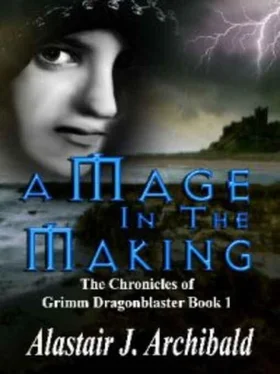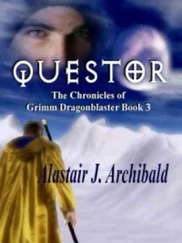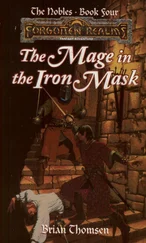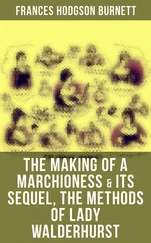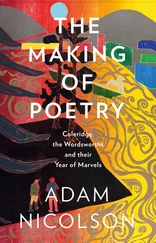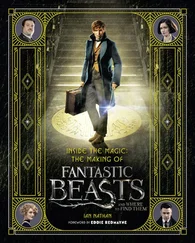Alastair Archibald - A mage in the making
Здесь есть возможность читать онлайн «Alastair Archibald - A mage in the making» весь текст электронной книги совершенно бесплатно (целиком полную версию без сокращений). В некоторых случаях можно слушать аудио, скачать через торрент в формате fb2 и присутствует краткое содержание. Жанр: Фэнтези, на английском языке. Описание произведения, (предисловие) а так же отзывы посетителей доступны на портале библиотеки ЛибКат.
- Название:A mage in the making
- Автор:
- Жанр:
- Год:неизвестен
- ISBN:нет данных
- Рейтинг книги:3 / 5. Голосов: 1
-
Избранное:Добавить в избранное
- Отзывы:
-
Ваша оценка:
- 60
- 1
- 2
- 3
- 4
- 5
A mage in the making: краткое содержание, описание и аннотация
Предлагаем к чтению аннотацию, описание, краткое содержание или предисловие (зависит от того, что написал сам автор книги «A mage in the making»). Если вы не нашли необходимую информацию о книге — напишите в комментариях, мы постараемся отыскать её.
A mage in the making — читать онлайн бесплатно полную книгу (весь текст) целиком
Ниже представлен текст книги, разбитый по страницам. Система сохранения места последней прочитанной страницы, позволяет с удобством читать онлайн бесплатно книгу «A mage in the making», без необходимости каждый раз заново искать на чём Вы остановились. Поставьте закладку, и сможете в любой момент перейти на страницу, на которой закончили чтение.
Интервал:
Закладка:
Alastair J. Archibald
A mage in the making
Prologue
Humankind's long flirtation with Technology began with the first crude stone tools and ended with the fusion flames of the Final War. The war lasted five days. At the end of this time, no ruler, government or nation remained to declare itself the victor. Plutonium mushrooms hung over Earth's once-proud cities of steel and glass, turning them into radioactive charnel houses. Hundreds of millions suffered and died in the radioactive ruins, cursing the technocrats who had brought them to the gates of Paradise, only to deny them entrance.
Humanity had overseen the demise of the dodo, the passenger pigeon, the thylacine wolf and many other species. It now faced extinction at the hands of its primary survival attribute: intelligence.
Under the black, awful clouds that coalesced to form a funeral pall over the proud dreams and hopes of mankind, the flame of the human race guttered fitfully, on the brink of final, irrevocable extinction.
Nonetheless, the indomitable human will to survive made many of those remaining on the face of the radiation-scorched planet struggle to rebuild some remnant of civilisation in the wilderness, where the depredation and tribulation wrought by the thermonuclear weapons was less than in the ruined cities. The first townships were little more than loose collections of shanties where people banded together to scour the radioactive ruins for tinned food, bottled water, clothes or whatever else they could find that might prove to be of some use in their shared fight for survival.
The scourge of radioactive decay lingered, and, for generations, sports and stillbirths were common, and even the victors of the initial struggle for survival hovered on the brink of oblivion. It was then that evolution, held at bay for so long by the protective cocoon of civilisation, began once more to shape the future of humankind.
At first, there were a few who, whilst outwardly normal, began to manifest strange abilities in their extreme youth, such as the ability to set fire to objects, or to levitate themselves above the ground. Many of these gifted individuals were killed as abominations and affronts to nature in the more puritanically fundamentalist communes. The forces of natural selection, aided by human rejection, played endless games of chance, using the lives of hapless sports and mutants as playing tokens. Most of these sports were sacrificed on the altars of new religious fundamentalism.
However, as more useful talents came to light, such as the ability to divine water in the desert, to see and delineate areas of high radiation and to cause the clouds to part or the rain to fall, these mutants became ever more highly prized and their practitioners were accorded high status, as religious strictures were thrown aside.
The most successful magic-users were protected from the harsh working conditions of the fields and were protected by their communities, although still shunned by the genetically "normal". Thus those with the gift survived and throve, their genes protected and strengthened by breeding with other gifted people who were their only real friends.
As the townships grew in affluence and wealth and magic became more accepted, the first guilds of magic sprang up to seek out and to foster the powers and sleights that might reside within the populace. Education and prosperity began to flower anew, and the spate of deformed children and stillbirths steadily decreased as the remaining breeding stock of humanity was slowly and painfully whittled down to the most hardy and resourceful individuals. Magic never became commonplace, but it became a valuable resource in the pursuit of the rebirth of Civilisation. Technology was but a dim memory, but it remained a source of hatred; a phantom with which to frighten fractious children.
Trade began between the townships as radioactive half-lives ticked away and the land became better able to support the growing of crops and the raising of healthy livestock. Barter gave way to letters of credit, followed by the exchange of metal and paper currency.
Five hundred years after those few days of thermonuclear insanity, the widely-separated townships were burgeoning centres of trade ringing the pockets of intense radiation that had been the old cities. The most important cities established the first schools of magic, training magically-gifted youngsters of both sexes. In time, two main classes of magic emerged: the male art of Thaumaturgy, whose acolytes derived power from within themselves; and its feminine equivalent, Geomancy, whose devotees obtained their magic from within the life-forces of Earth itself, including physical love.
Most witches went about their lives in a harmonious way, applying their Geomantic powers to cure sickness and to mend damaged items; most of the new cities welcomed powerful witches.
The early mages used their budding Thaumaturgical skills in a mechanistic manner to lift heavy loads and to deter crime, and, in many cases, they lived alongside their female counterparts in a harmonious and friendly working relationship. Romances between mages and witches were not only tolerated but encouraged; the child of a witch and a mage was likely to be more powerful and skilled than either of his or her parents.
Generation by generation, the dispassionate power of Natural Selection amplified the traits of magic and the differences between the two complementary disciplines.
The truce between the devotees of Geomancy and the adepts of Thaumaturgy did not last. The death knell of the old concord sounded as the mages began to band together into what would become the Guild of Magic-users, Sorcerers and Thaumaturges, guarding the secrets of their art with jealous zeal. The witches responded by forming the Geomantic Sisterhood, which the mages saw as a threat to their growing power.
The new battle of the sexes ended when the Guild introduced strict rules of celibacy, denying the members of the Sisterhood their greatest advantage over their male rivals for power. Although most witches gained great reserves of magical strength through intimate physical contact with men, they did not seek to use it as a weapon against their male-friends; nonetheless, the masters of the Guild saw sexual contact as a threat, and they acted accordantly, instituting strict rules of celibacy for all mages under their control.
Denied direct influence over the mages, the witches' might waned, and the patriarchal cities began to marginalise the witches, giving preference to the establishment of Guild Houses, who were governed by a single authority: High Lodge. While the Houses undertook the training of promising boys who showed the signs of Thaumaturgical power, High Lodge stood aloof, confining its role to the determination of Guild policy and the settlement of disputes between the rival Houses.
The Sisterhood faded and died, leaving its former members to scratch out meagre livings as best they could, while the Guild went from strength to strength. In time, the reasons for the strict rules regarding celibacy and Technology were forgotten, although the laws themselves remained as articles of faith.
After the passage of eight millennia, the Guild became complacent; confident in its pre-eminence, putting its trust in its ancient laws and strictures. Protected by law in many townships and cities, its leaders became self-satisfied and vulnerable, since no single organisation remained to oppose it.
While most witches accepted their imposed lower status, many did not. Many peaceful demands for the recognition of witches were crushed by brutal force from the towns' fathers, until only the very bravest women would dare complain about their lot. The majority of the enfeebled witches had little choice but to accept the few, stale crumbs their male masters threw them, deprived as they were of their greatest power. A thousand years after its formation, the Guild basked in its pomp and pride. Since no enemies remained to threaten its supremacy, it became bloated and lethargic, a shadow of its former self.
Читать дальшеИнтервал:
Закладка:
Похожие книги на «A mage in the making»
Представляем Вашему вниманию похожие книги на «A mage in the making» списком для выбора. Мы отобрали схожую по названию и смыслу литературу в надежде предоставить читателям больше вариантов отыскать новые, интересные, ещё непрочитанные произведения.
Обсуждение, отзывы о книге «A mage in the making» и просто собственные мнения читателей. Оставьте ваши комментарии, напишите, что Вы думаете о произведении, его смысле или главных героях. Укажите что конкретно понравилось, а что нет, и почему Вы так считаете.
